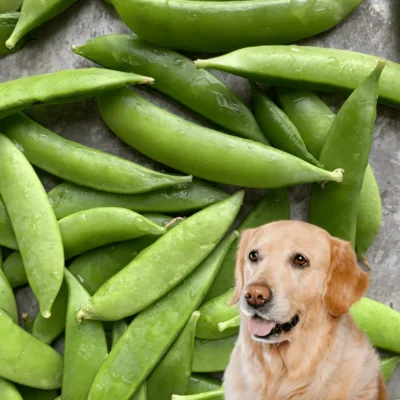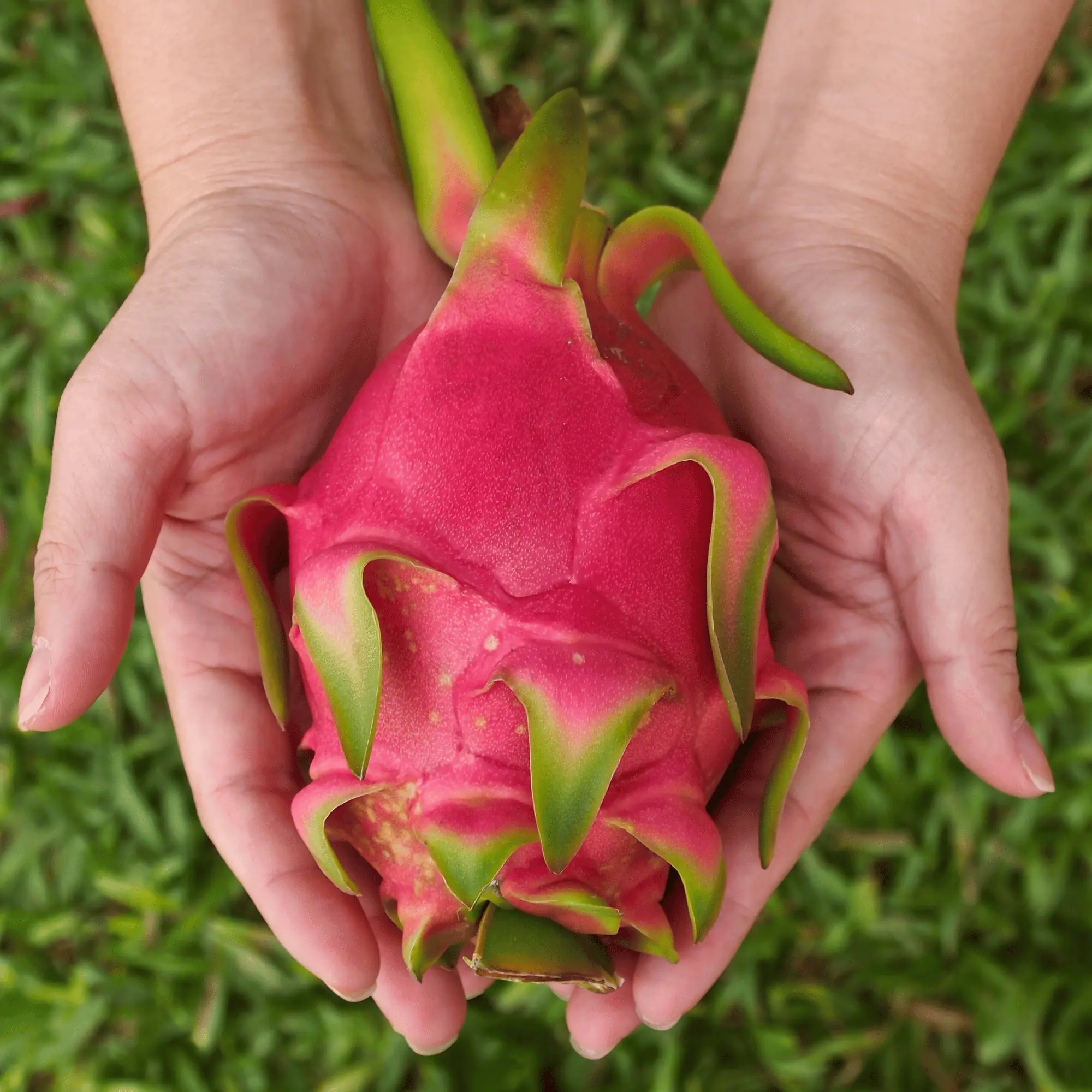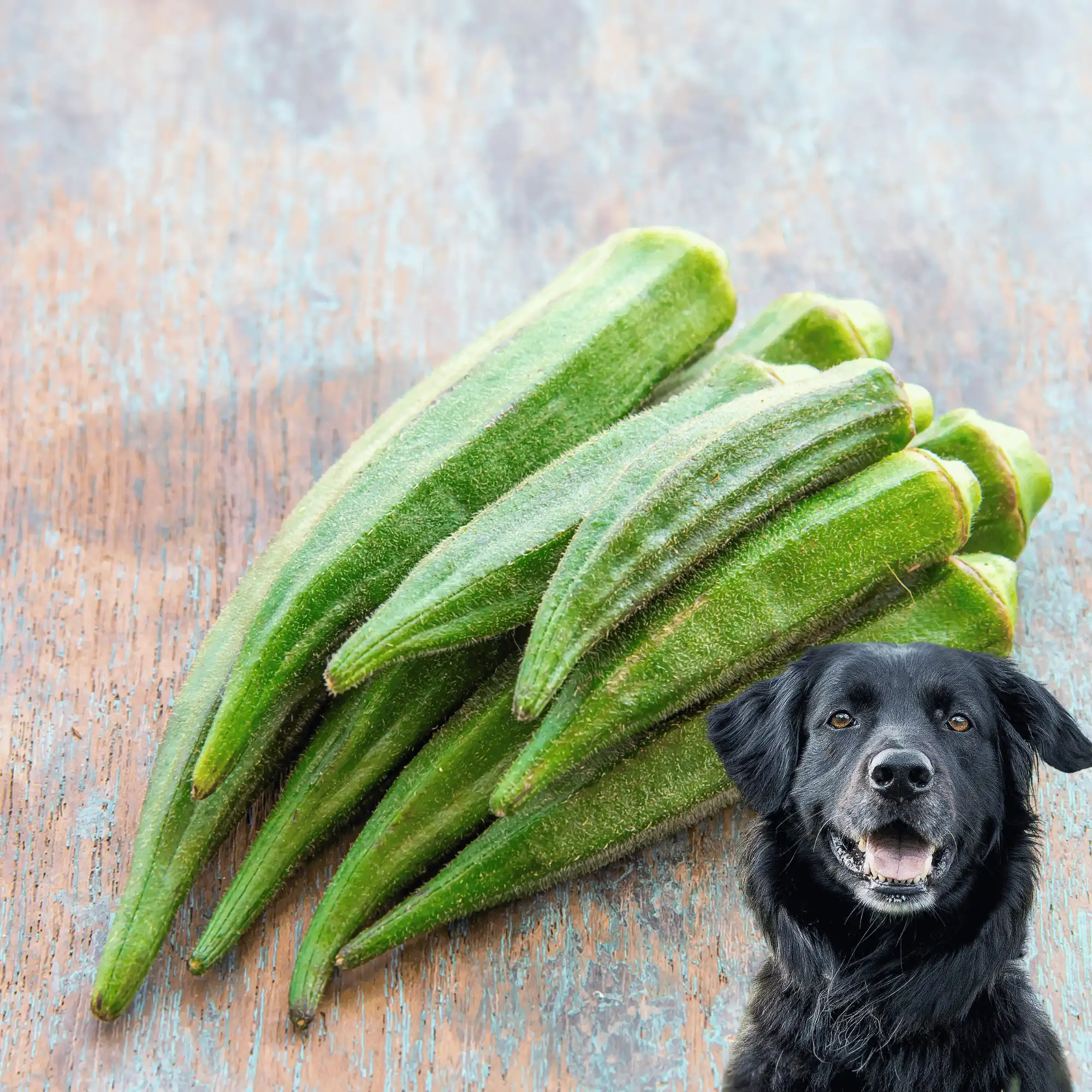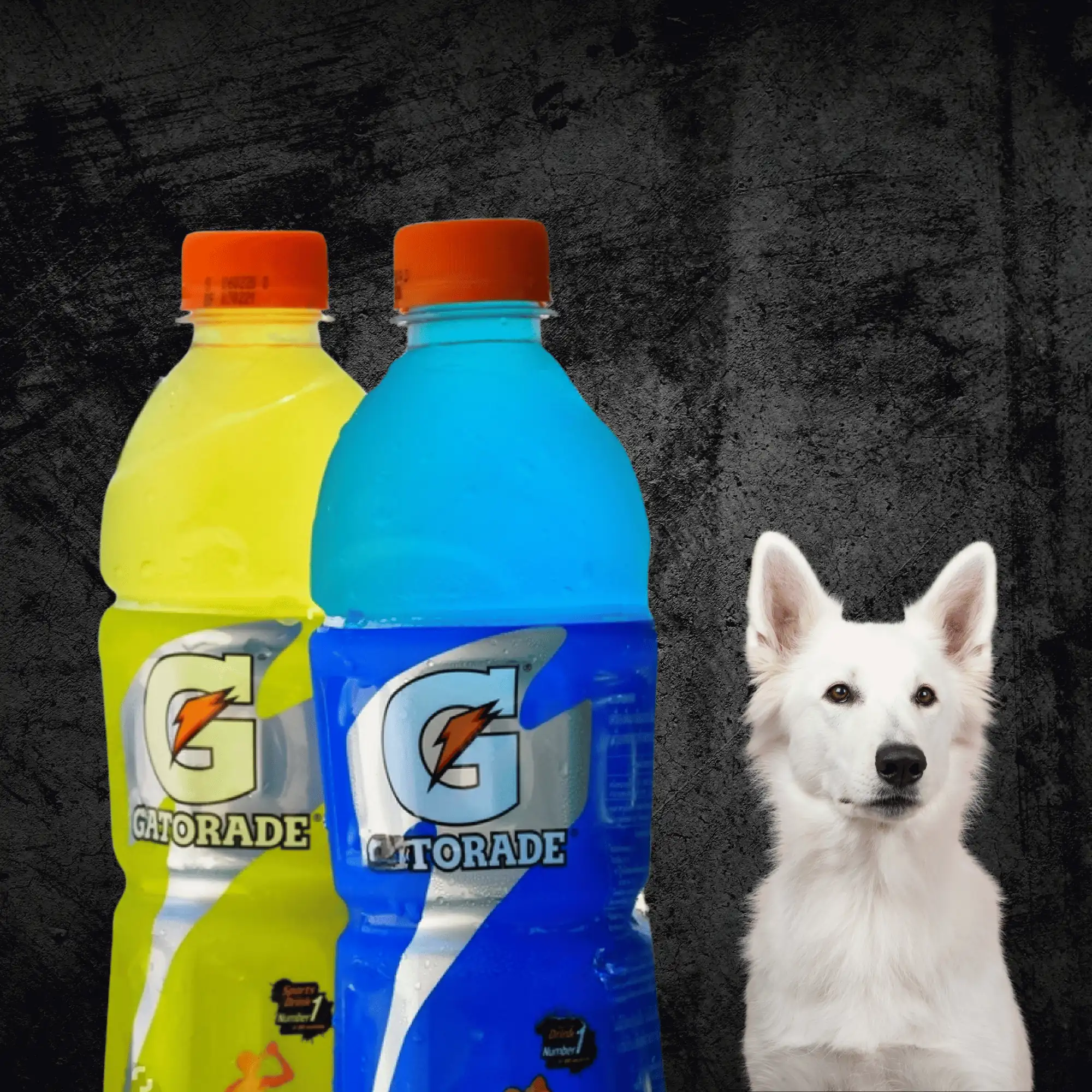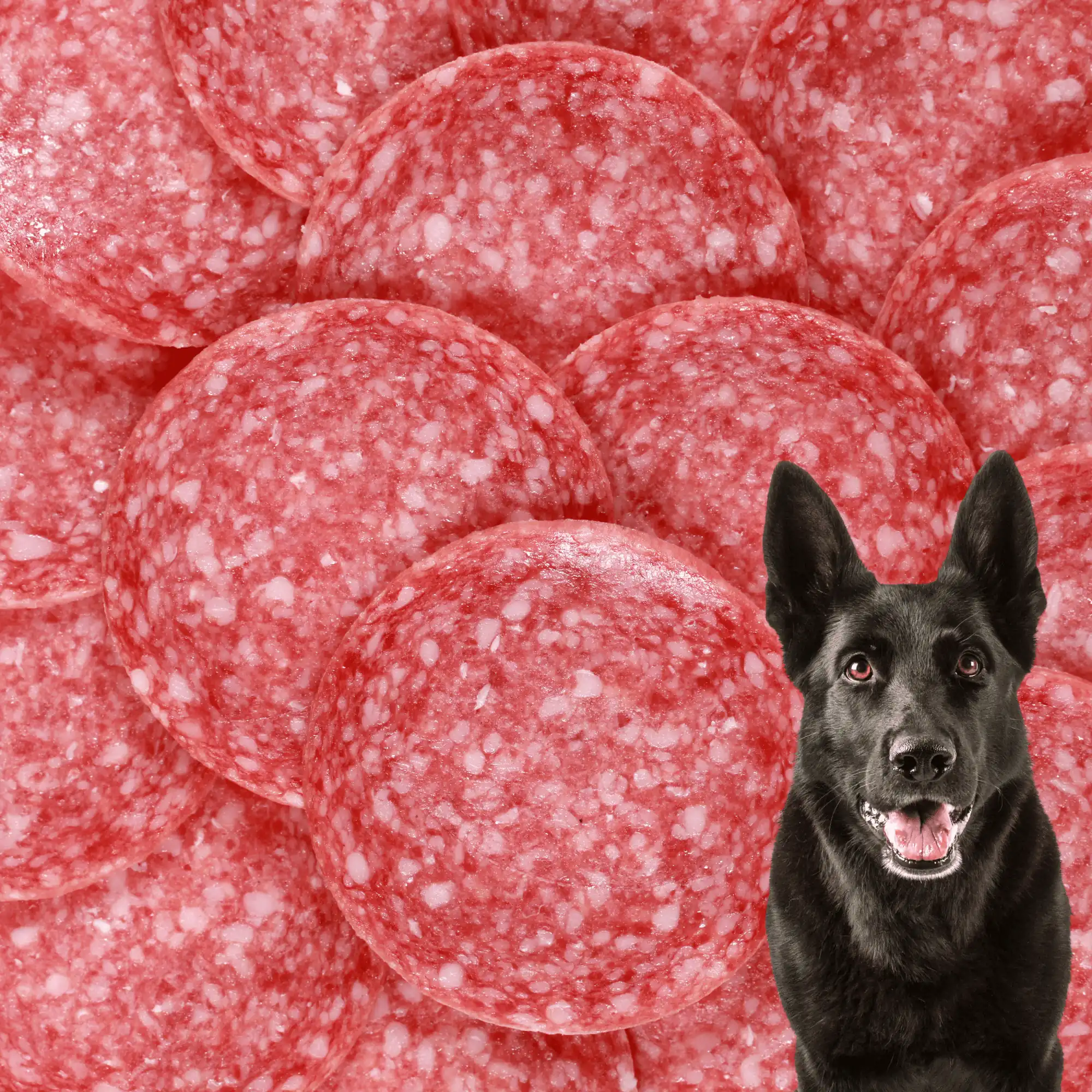Peas are a staple in many households, often served as a side dish or cooked into various recipes. But what about our furry friends? Can dogs safely enjoy peas as part of their diet? The short answer is yes—dogs can eat peas. They are safe and nutritious treats for your four-legged companions. Let’s explore the compatibility of peas with your dog’s diet.
In this article, we’ll delve into the nutritional benefits of peas for dogs, explore any potential risks, and provide safety tips for incorporating peas into your dog’s meals.
Below are the topics we’ll discuss in this blog post:
- Can Dogs Eat Peas?
- What Kind of Peas Can Dogs Eat?
- Nutritional Benefits of Peas for Dogs
- Risks of Feeding Peas to Dogs
- How Much Peas Can Dogs Eat?
- How Do You Serve Peas to Your Dogs?
Can Dogs Eat Peas?
Yes, dogs can eat peas without any issues. Whether it’s green peas, snow peas, sugar snap peas, or garden/English peas, they’re all suitable for your canine companion’s occasional indulgence. Peas boast an array of vitamins and minerals, making them a nutritious addition to your dog’s diet.
Peas, also known as legumes, are rich in protein and high in fiber, offering various health benefits. You can opt to feed your dog fresh or frozen peas, but steer clear of canned peas containing added sodium, which isn’t ideal for your pup’s health. So, next time you’re preparing a meal, consider tossing a few peas into your dog’s bowl for a tasty and nutritious treat.
What Kind of Peas Can Dogs Eat?
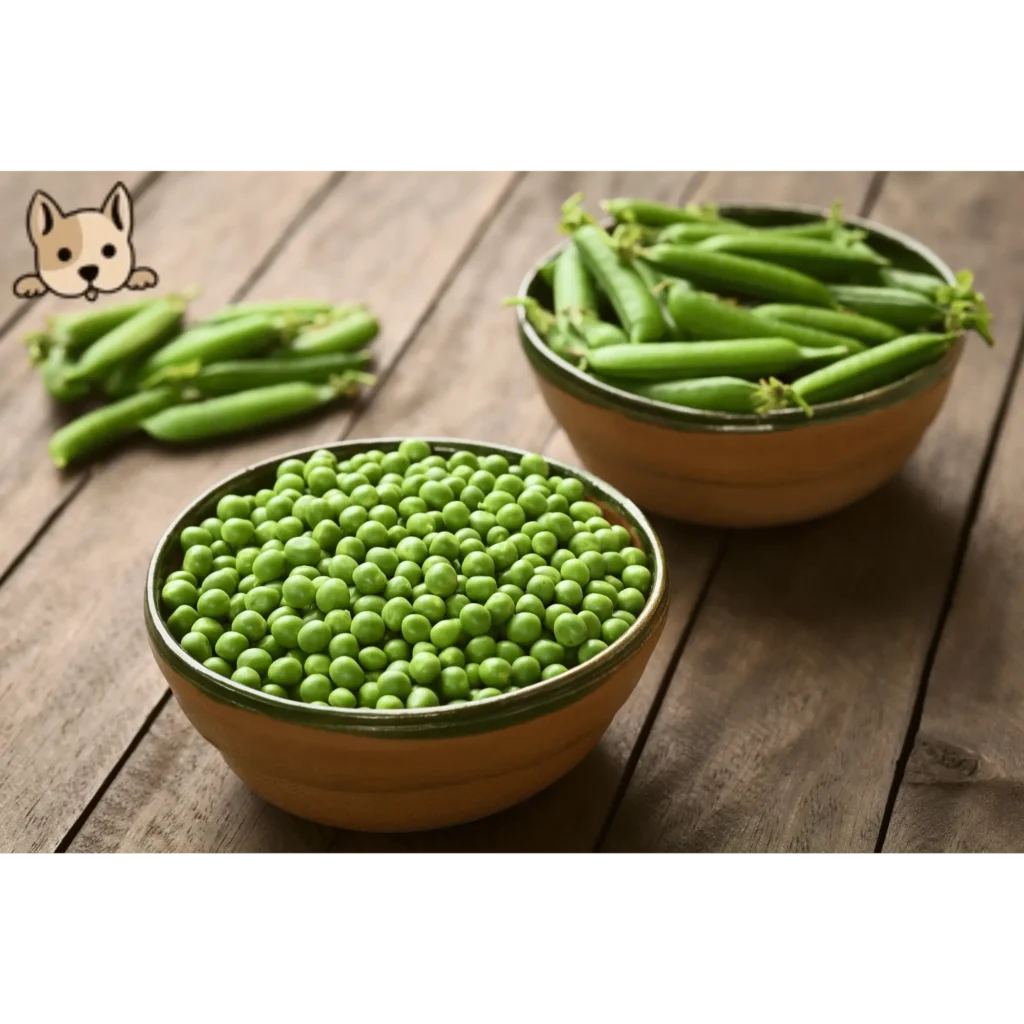
While peas can be beneficial for your dog, not all types of peas are safe or nutritious for them to consume—particularly if they’re prepared with extra ingredients like butter, salt, or spices.
Here’s a breakdown of different types of peas and their suitability for your furry friend:
1. Frozen Peas:
Frozen peas are generally safe for dogs to eat in moderation, provided they’re not seasoned with harmful ingredients like salt. You can offer them to your pup straight from the freezer as a crunchy treat, although cooking them can make them easier for your dog to chew.
2. Canned Peas:
Unfortunately, canned peas are not recommended for dogs due to their high sodium content. Foods rich in sodium can lead to dehydration and other health issues in dogs. While an occasional nibble from the can might not pose a significant risk, regular consumption could potentially cause long-term health problems for your furry friend.
3. Chickpeas:
Chickpeas are an excellent source of protein, fiber, and essential nutrients for dogs. However, ensure they’re thoroughly cooked before serving them to your dog.
4. Black-Eyed Peas:
Black-eyed peas are safe for dogs to eat, but it’s essential to ensure they are thoroughly cooked and served plain, without any added seasoning or spices. This
5. Snap Peas:
Snap peas are a fantastic source of vitamins A and C for dogs. However, because the outer pods may be tough for some dogs to digest, it’s best to serve snap peas cooked or chopped into small, manageable pieces for your furry friend to enjoy safely.
Nutritional Benefits of Peas for Dogs:
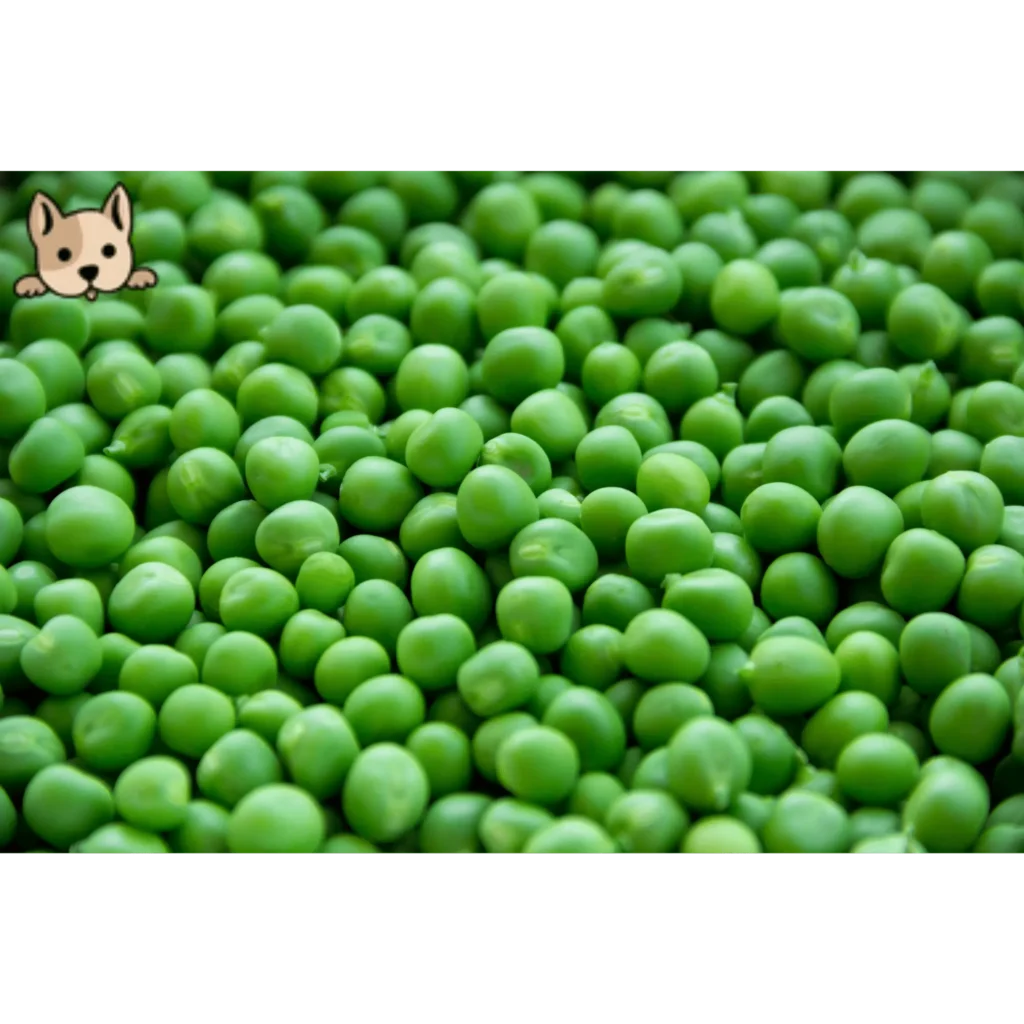
Peas are not only a popular addition to human meals but also offer numerous nutritional benefits for dogs. Here are some of the key nutritional advantages of feeding peas to your canine companion:
1. Vitamins:
- Vitamin A: Peas contain beta-carotene, a precursor to vitamin A, which is essential for maintaining healthy vision, promoting proper growth and development, and supporting immune function in dogs.
- Vitamin B Complex: Peas are rich in several B vitamins, including thiamine (B1), riboflavin (B2), niacin (B3), pyridoxine (B6), and folate (B9). These vitamins play crucial roles in metabolism, energy production, nervous system function, and the synthesis of red blood cells.
- Vitamin K: Peas provide vitamin K, which is necessary for blood clotting and bone health in dogs.
2. Minerals:
- Iron: Peas contain iron, an essential mineral that is vital for oxygen transport in the blood, energy metabolism, and the formation of red blood cells.
- Potassium: Potassium, found in peas, helps regulate fluid balance, maintains proper muscle function, and supports heart health in dogs.
- Magnesium: Peas supply magnesium, which is involved in numerous biochemical reactions in the body, including muscle and nerve function, protein synthesis, and bone health.
- Zinc: Peas contain zinc, an important mineral for skin and coat health, immune function, and wound healing in dogs.
3. Fiber:
Peas serve as an excellent source of dietary fiber, encompassing both soluble and insoluble varieties. This fiber content plays a pivotal role in digestive health, facilitating regular bowel movements, averting constipation, and nurturing a balanced gut microbiota.
Furthermore, fiber aids in the regulation of blood sugar levels and can contribute to weight management by fostering a sense of satiety. With their multifaceted benefits, incorporating peas into your dog’s diet can support their overall well-being and digestive harmony.
4. Protein:
Peas may not have as high protein content as animal-based sources, but they still offer a significant amount of plant-based protein. This protein is important for muscle development, repair, and overall growth in dogs.
Peas can be particularly beneficial for dogs with protein sensitivities or allergies to common animal proteins.
5. Low in Calories and Fat:
Peas are relatively low in calories and fat, making them a suitable option for dogs that need to maintain a healthy weight or are on a restricted-calorie diet.
They offer a nutritious alternative to high-calorie treats and snacks, allowing dogs to indulge without excessive caloric intake.
6. Antioxidants:
Peas are rich in antioxidants, including flavonoids and carotenoids, which play a crucial role in combating oxidative stress and reducing the risk of chronic diseases.
These antioxidants contribute to overall cellular health and may support longevity in dogs by protecting against cellular damage.
Incorporating peas into your dog’s diet can provide a range of nutritional benefits, contributing to their overall well-being and vitality. Whether served as a standalone snack, mixed into meals, or included in homemade treats, peas offer a wholesome addition to your furry friend’s diet.
Risks of Feeding Peas to Dogs:
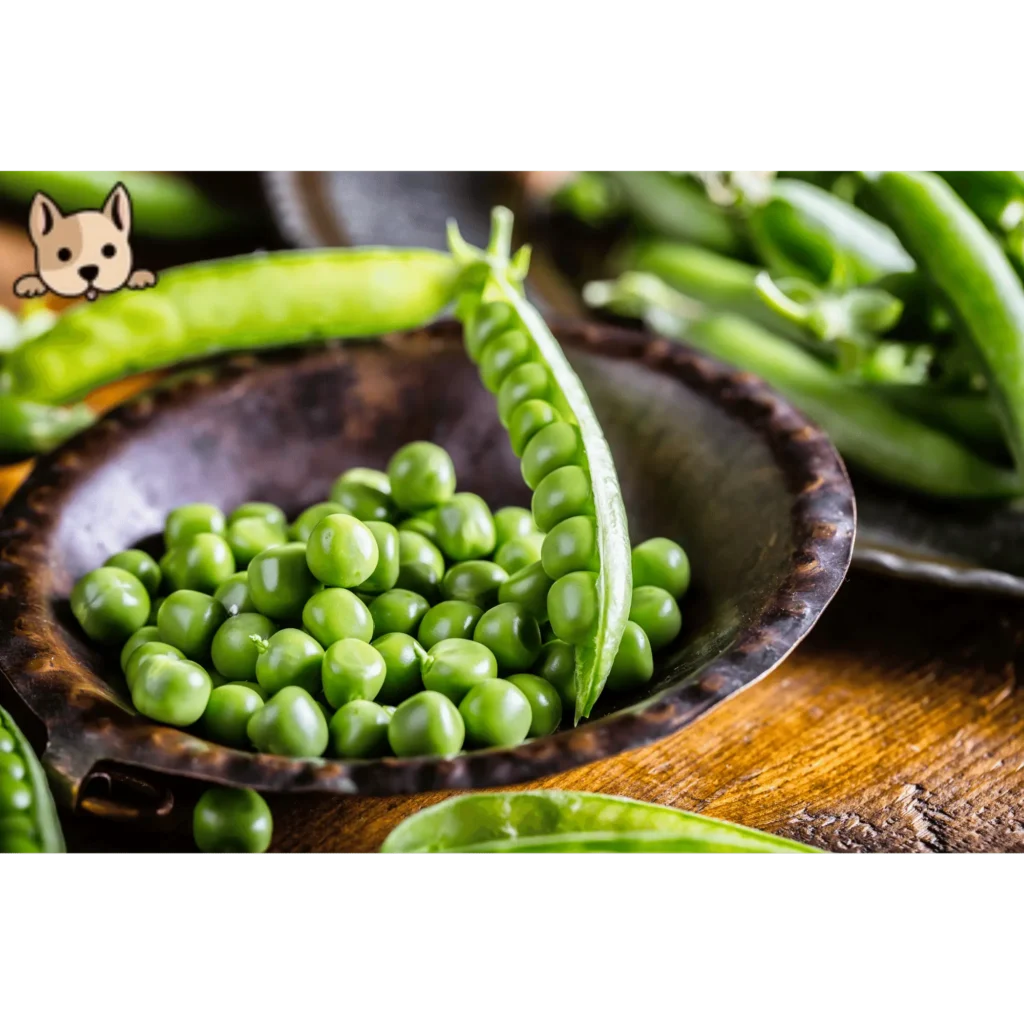
While peas offer numerous nutritional benefits for dogs, there are some perils associated with feeding them to your canine companion. It’s essential to be aware of these potential risks to ensure the safety and well-being of your dog. Here are some of the drawbacks of feeding peas to dogs:
1. Digestive Upset:
Peas contain fiber, which can be beneficial for digestive health. However, excessive consumption of peas, especially if introduced suddenly or in large quantities, can lead to digestive upset in some dogs. Symptoms may include diarrhea, vomiting, flatulence, or abdominal discomfort.
2. Allergic Reactions:
Although uncommon, some dogs may be allergic to peas or develop sensitivities to certain components in peas. Signs of an allergic reaction may include itching, hives, swelling, difficulty breathing, or gastrointestinal disturbances.
If your dog exhibits any signs of an allergic reaction after consuming peas, discontinue feeding them and consult your veterinarian promptly.
3. Choking Hazard:
Whole peas, particularly if served raw or frozen, may pose a choking hazard, especially for small dogs or those prone to gulping their food without chewing thoroughly.
To minimize the risk of choking, consider mashing or pureeing peas before feeding them to your dog, or opt for smaller varieties such as petite peas.
4. Flatulence:
Peas, like other legumes, contain carbohydrates that are fermented in the gut, potentially leading to increased gas production in some dogs.
While flatulence is a common side effect of consuming peas, excessive gas can cause discomfort and may indicate an underlying digestive issue or sensitivity.
5. High Oxalate Content:
Peas, particularly certain varieties such as snow peas or snap peas, contain oxalates, naturally occurring compounds that can bind to calcium and form crystals.
In dogs predisposed to calcium-oxalate bladder stones or urinary issues, excessive consumption of high-oxalate foods like peas may exacerbate these conditions.
If your dog has a history of urinary tract problems, consult your veterinarian before including peas in their diet.
6. Toxicity Concerns:
While peas themselves are not toxic to dogs, caution should be exercised when feeding seasoned or flavored peas intended for human consumption.
Ingredients such as garlic, onions, or salt, commonly used in some pea dishes, can be harmful or toxic to dogs if ingested in large amounts.
To mitigate the risks associated with feeding peas to dogs, it’s essential to introduce them gradually, monitor your dog’s response closely, and feed them in moderation.
How Much Peas Can Dogs Eat?
While peas offer dogs numerous nutritional benefits, it’s crucial to feed them in moderation to avoid potential digestive issues such as gas and diarrhea.
Following the 10% rule is a helpful guideline for maintaining a balanced diet for your canine companion. This rule suggests that treats, including vegetables like peas, should only constitute 10% of your dog’s total daily calorie intake, with the remaining 90% coming from a well-balanced diet of dog food.
Here’s a breakdown of how many peas are generally safe for dogs to consume based on their weight:
| Dog Size | Pea Serving Size | Examples |
| Extra-small (2–20 lbs) | 1 teaspoon (or less) | Yorkies, Chihuahuas, Pomeranians, Pugs |
| Small (21–30 lbs) | 2 teaspoons (or less) | Basenjis, Beagles, Scottish Terriers |
| Medium (31–50 lbs) | 3 teaspoons (or less) | Basset Hounds, Australian Cattle Dogs, Border Collies |
| Large (51–90 lbs) | 1–2 tablespoons (or less) | Pit Bulls, German Shepherds, Australian Shepherds, Labrador Retrievers |
| Extra-large (over 90 lbs) | 3 tablespoons (or less) | Newfoundlands, Bernese Mountain Dogs, Great Pyrenees, Saint Bernards |
Remember, these are general guidelines, and individual dogs may have different dietary needs and tolerances. It’s always best to consult with your veterinarian before making significant changes to your dog’s diet, including the introduction of new treats like peas. Y
How Do You Serve Peas to Your Dogs?
If you’re considering adding peas to your dog’s diet, it’s important to prepare them carefully, keeping in mind your dog’s health and safety. To start, opt for plain peas and cook or steam them until they’re tender. This preparation method ensures that the peas are easily digestible for your furry friend. Additionally, if your dog has difficulty chewing or swallowing, mashing the peas can make them more manageable.
When introducing peas, start with small amounts and gradually increase serving sizes to prevent digestive upset. Monitor your dog for any adverse reactions, such as allergies or digestive issues, and avoid overfeeding to maintain balance in their diet.
Incorporate peas into your dog’s meals as a healthy food topper or offer them as a standalone snack. Just remember to keep portions moderate and prioritize your dog’s overall well-being. With proper preparation and moderation, peas can be a nutritious addition to your dog’s diet.
Conclusion:
In conclusion, peas can be a safe and nutritious addition to your dog’s diet when introduced and served correctly. They offer a plethora of vitamins, minerals, fiber, and protein, contributing to your furry friend’s overall health and well-being. However, it’s essential to be mindful of potential risks, such as digestive upset, allergies, choking hazards, and urinary issues, and to feed peas in moderation.
When incorporating peas into your dog’s diet, opt for plain, cooked, or steamed peas without any harmful additives or seasonings. Gradually introduce peas into your dog’s meals, monitor their response closely, and consult your veterinarian if you have any concerns or if your dog experiences any adverse reactions.
By following safety guidelines, monitoring portion sizes, and prioritizing your dog’s individual needs and dietary requirements, you can ensure that peas are a tasty and nutritious treat for your canine companion. With proper care and attention, peas can be a wholesome addition to your dog’s diet, providing variety, flavor, and essential nutrients to support their overall health and vitality.
FAQs:
Why can’t dogs eat peas?
You can safely feed your dog fresh, frozen, or thawed peas, but avoid canned peas due to their high sodium content. As for pea pods, if humans can eat them, so can your dog, but always supervise your dog while they eat pea pods to prevent choking or digestive issues.
How many peas can I give my dog?
To prevent flatulence and bloating, always feed peas to your dog in moderation. For small breeds, stick to a teaspoon of peas, while larger breeds can have up to a tablespoon. If your dog is new to peas, start with just one or two to gauge their response.
What are the best vegetables for dogs?
Some of the most commonly used vegetables in dog food include beets, broccoli, Brussels sprouts, cauliflower, carrots, celery, corn, green beans, peas, spinach, and sweet potatoes. These vegetables are not only easily digestible for dogs but also rich in essential nutrients.
Can peas upset a dog’s stomach?
Introducing peas into your dog’s diet in small amounts is advisable, especially if they haven’t had them before. While peas can upset a dog’s stomach, it varies from dog to dog and depends on their previous exposure to peas. Starting with small portions allows you to monitor your dog’s reaction and adjust accordingly.






